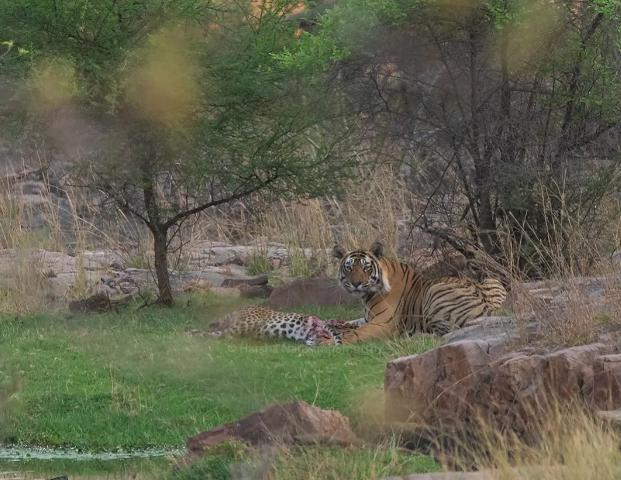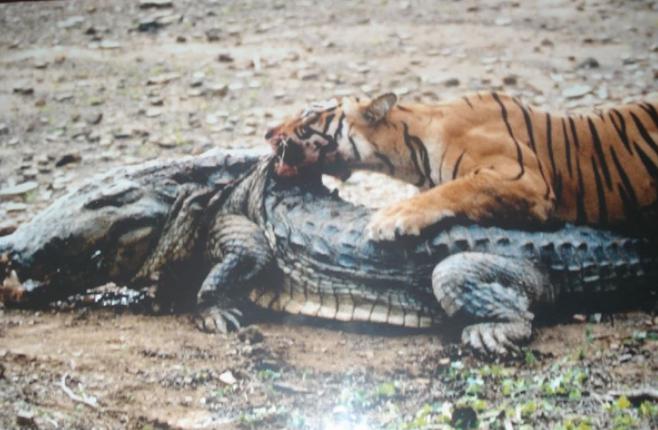Cat Man Catches Two Cats On Camera
Machli Immortalized After Video of Fight With Monster Croc
Remember the amazing picture – a video grab- from an amateur video of Machli, one of the most photographed big cats, of Ranthambore. The tigress was seen fighting with 14 feet long fierce crocodile piercing her canines deep into the monster’s body . The cause of the fight might have been a common prey in the lake where Machli had encountered equally fierce reptile. The video with over 35 lakh views on You Tube was shot by an unknown person. Popularity of Machli soared after this video and the wildlife lovers world over started calling her “Crocodile Killer”. So Ranthambore gives ample opportunities both to the professionals and armatures. A conservation biologist , Dharmendra Kandhal who works with the Tiger Watch in Ranthambore for long explained the “why” factor. The forest type, its terrain and proximity of the forest to the golden triangle of tourism comprising Delhi, Agra and Jaipur make the park different. “It is extension of the golden triangle of tourism ”, he said.
Also read: Game Hunting by Maharajas to Bushmeat Poaching: Blackbucks killed in Thousands
But the main reason seems to be the forest type. “The Ranthambore national park is a dense tropical dry forest located in one of the driest regions of the country. Though it is located at the edge of a plateau between the Banas River and the Chambal River, no perennial river passes through it. The park however, has many lakes and narrow valley. It is a raw bush and grassy meadowland.” Unlike Sariska national park located on Aravalli range, there height of the hills here is almost half as compared to those in Sariska. “All these factors facilitate the visibility of the wild animals which are very cooperative and do not shy with the tourists leading to excellent picture opportunities.” Besides, some talented wildlife photographers like Aditya Singh settled down in Ranthambore also contributed to some astonishing wildlife images. Remember his series of pictures of a tiger fight with bear with the bear beating the big cat in the end. Aditya and his wife Poonam made Ranthambore their home long back. Recently National Geographic also recognized their work in a documentary earlier this year.




Ranthambore has dry Deciduous Forest type. One of the reason the big cats gets exposed easily. The article bring forth the pressure national park is facing being in the golden triangle of tourism. Forest circle should be tagged
ReplyDelete